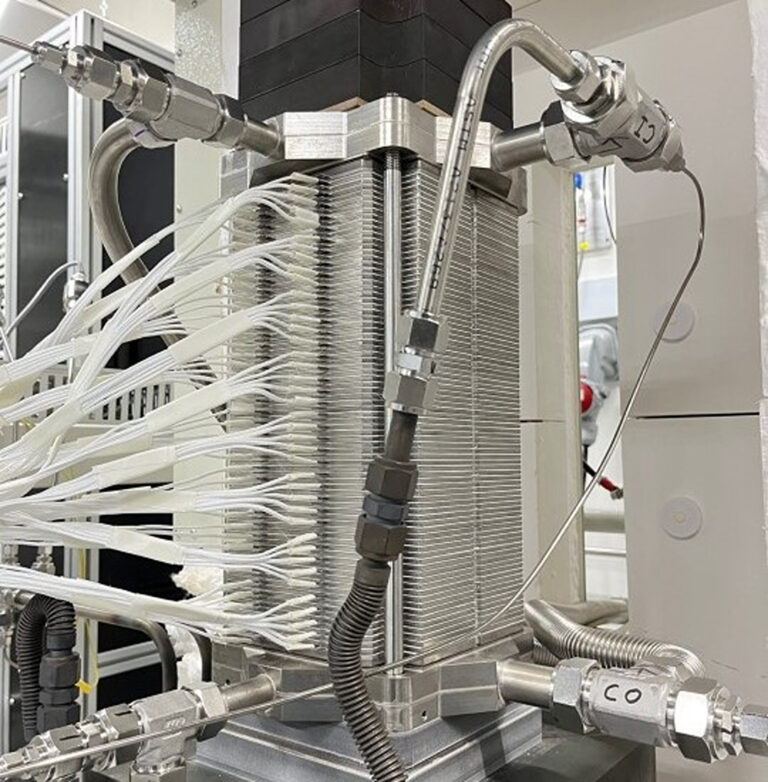The Korea Institute of Energy Research has developed a solid oxide electrolytic cell stack that uses a special kind of separator plate to ensure proper flow of hydrogen and oxygen after water splitting. Samsung Electro-Mechanics and Bumhan Industries are now working with the research center to improve the relevant production process.
The Korea Institute of Energy Research (KIER) has announced that a group of scientists have developed an 8 kW engine solid oxide electrolytic cell (SOEC) that can reportedly produce more than 5 kg of hydrogen per day.
SOEC systems usually rely on a solid oxide, or ceramic, to produce hydrogen and oxygen. They use water fed to the cathode to separate hydrogen from water in an external separation unit, with the hydroxide ions flowing through an aqueous electrolyte to the anode to generate oxygen.
“The SOEC technology, which electrolyzes high-temperature steam into hydrogen and oxygen, is considered a highly efficient hydrogen production technology that can reduce electricity consumption by more than 25% compared to other electrolysis methods, when applied in places with high demand for hydrogen and /or a large steam supply, such as nuclear power plants, steel mills, petrochemical plants and ammonia plants,” the researchers said.
They built the SOEC stack layering of ceramic cells, separator plates and sealing materials. The special feature is the separator plate, for which the academics have applied a compression molding method that reportedly reduces production costs and time. This technique was used to create channels that allow proper flow of hydrogen and oxygen in the system.
“While the existing process could produce a maximum of 100 separator plates per day, the use of the compression molding method allows the production of more than 1,000 plates per day, improving both production costs and time,” they explained.
The group claims that she was also able to do so maximize the contact area between the cell and the separator plate, which is said to provide more uniform performance, and to seal the stacked components via soldering technology. “This approach ensures that the stack can minimize hydrogen leakage even under thermal shock or rapid temperature changes, maintaining stable performance,” the report points out.
A series of tests showed that the system provided stable operation Deliver 2,500 hours and 5.7 kg of hydrogen per day.
The research institute said it is now working with South Korean conglomerate Samsung Electro-Mechanics and fuel cell developer Bumhan Industries to improve the proposed manufacturing process.
This content is copyrighted and may not be reused. If you would like to collaborate with us and reuse some of our content, please contact: editors@pv-magazine.com.


